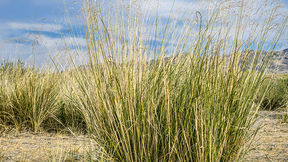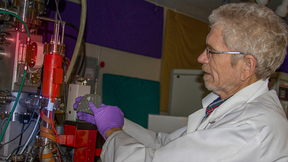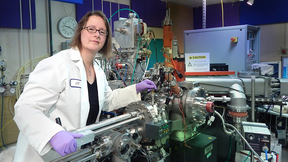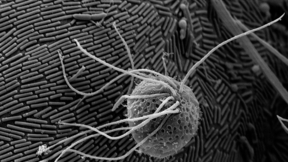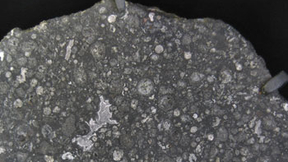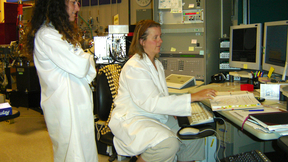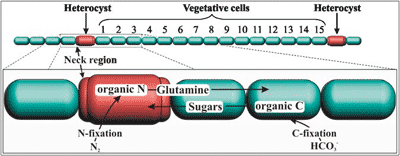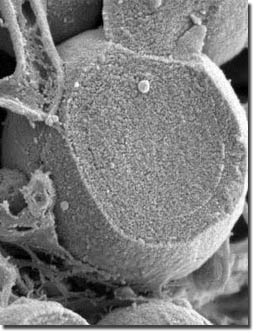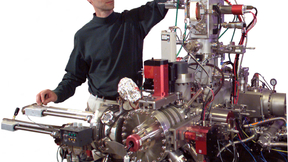Back
NanoSIMS
Unexpected source of nutrients fuels growth of toxic algae from Lake Erie
Climate change, such as warming and changes in precipitation patterns, affects the frequency and severity of harmful algal blooms (HABs) globally, including those of toxin-producing cyanobacteria that can contaminate drinking water. These nutrient-induced blooms cause worldwide public and ecosystem health concerns. Since the mid-1990s, Lake Erie, the shallowest and warmest…
Marginal soil can make for good biofuel crops
Switchgrass, a perennial native to the tallgrass prairie, is one of the most promising bioenergy crops in the United States, with potential to provide high-yield biomass on marginal soils unsuitable for traditional agricultural crops.New research by Lawrence Livermore National Laboratory, UC Berkeley, the University of Oklahoma, Lawrence Berkeley National Laboratory and…
Research award named after late LLNL scientist
The first Dr. Ian Hutcheon Post-Doctoral Fellowship award, to support research in nuclear forensics as part of the Department of Homeland Security (DHS) Domestic Nuclear Detection Office’s (DNDO) National Nuclear Forensics Expertise Development Program, has been established. The fellowship honors the late Hutcheon, who significantly advanced America’s nuclear forensics…
Two Lawrence Livermore researchers awarded early career funding
Lawrence Livermore National Laboratory (LLNL) scientists Jennifer Pett-Ridge and Todd Gamblin have been selected by the U.S. Department of Energy's Office of Science Early Career Research Program to receive funding for proposed projects.Jennifer Pett-Ridge was selected for her work titled, "Microbial Carbon Tranformations in Wet Tropical Soils: The Importance of Redox…
Seeing is believing: LLNL Postdoc reveals wonders of the protist world
No matter how sophisticated instruments have become, or how data intensive results may be, there is still something satisfying and frequently informative about seeing what a researcher is studying. Sometimes samples are so small, or so large, or so far away that it's almost impossible to get a visual perspective that makes any sense or reveals any insight. That's where the…
Livermore research tops NASA's science highlights
Research conducted by Livermore scientists that determined some of the oldest objects in the solar system formed far away from our sun and then later fell back into the mid-plane of the solar system has landed a top spot in this year's NASA Science Highlights.The research may lead to a greater understanding of how our solar system and possibly other solar systems formed…
From toxicity to life: arsenic proves to be a building block
LIVERMORE, Calif. - Arsenic -- an element that triggers death for most Earthly life forms -- is actually allowing for bacterium to thrive and reproduce. In a study that may prompt the rewriting of textbooks, a team of astrobiologists and chemists has found the first known living organism that can use arsenic in place of phosphorus in its major macromolecules. The new…
Piecing together the cyanobacteria puzzle
LIVERMORE, Calif. – Blue green algae are significant species in the global carbon cycle because they transform nitrogen gas from the atmosphere into a useable nutrient, enabling photosynthesis in nutrient-poor waters.Using NanoSIMS (high- resolution secondary ion mass spectrometer), Lawrence Livermore National Laboratory, USC and Portland State University scientists showed…
Microbes at work cleaning up the environment
LIVERMORE, Calif. – It may sound counterintuitive to use a microbial protein to improve water quality.Butsome bacteria are doing just that to protectthemselves from potentially toxic nanoparticlesin their own environments, and clean up crewsof the future could potentially do the samething on a larger scale.A team from Lawrence Livermore National Laboratory,UC Berkeley and…
Research advances understanding of how cell membranes function
LIVERMORE, Calif. — A team of scientists, including two from Lawrence Livermore National Laboratory, has achieved an important advance in the race to understand what guides and facilitates the functioning of the cell membrane.Their work, which could assist in better understanding of how viruses interact with cells and in the attribution of bioterrorist acts, is described…



